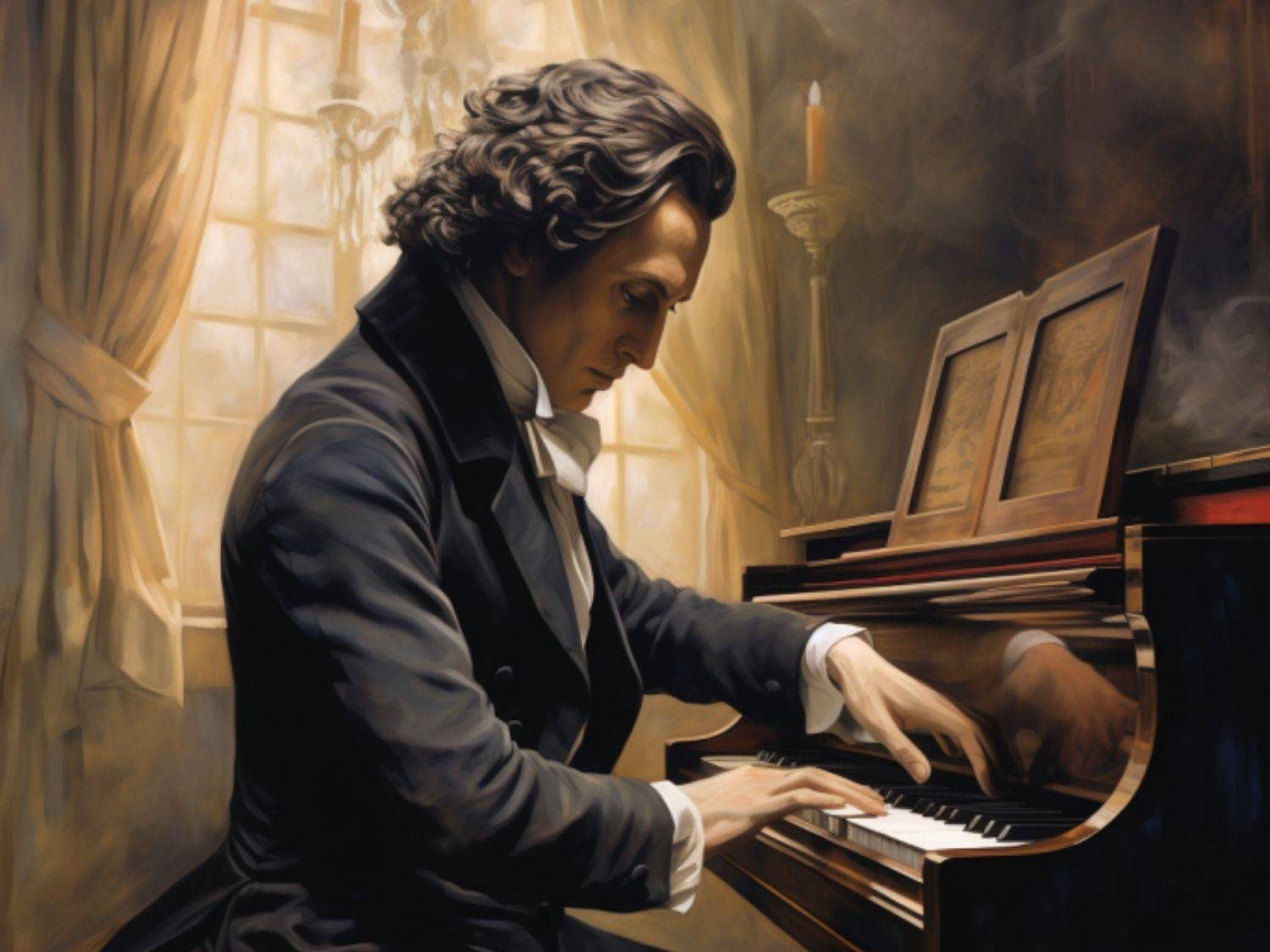This musician with a French name was a Pole with Russian nationality: Who is Fredric Chopin?
In Paris at that time, where figures such as Balzac, Musset, Meyerbeer, Heine, Liszt, and George Sand lived, Chopin's star rose and faded, as he was extremely ill in spirit as well as in body. Chopin, like Schumann, was a truly romantic artist, but he was also a completely different person in terms of creation.

His composition shows this most clearly. With the exception of a few of his works, he devoted his composition entirely to the piano.
Frédéric Francois Chopin was born on March 1, 1810, in the Polish town of Zelazowa Wola. His unique talent for music showed itself at an early age. His unique piano talent attracted the attention of music educators at an early age. After studying at the Warsaw Conservatory, he focused on his composing career at a young age and subsequently became one of the most famous pianists and composers in the world.
Frédéric François Chopin (born Fryderyk Franciszek Chopin; 1 March 1810 – 17 October 1849) was a Polish composer and virtuoso pianist of the Romantic period, who wrote primarily for solo piano. He has maintained worldwide renown as a leading musician of his era, one whose "poetic genius was based on a professional technique that was without equal in his generation".
Chopin's health caused him to spend most of his life traveling. The invasion of Poland by Russia in 1830 led him to settle in Paris. Paris was the place where he reached the peak of his artistic career. During this period, he attracted great attention with the romantic and emotional characteristics of his music. He quickly gained fame as a pianist and composer, known in aristocratic and intellectual circles.
While Chopin gave many concerts in Paris, he also tried to make a living by giving private lessons. His compositions were generally written for solo piano and dealt with themes of romanticism such as emotional lyricism, melancholy, and sadness. His distinctive piano technique and emotional expression made him one of the most prominent composers of his period.
Frédéric Chopin's artistic life stands out by creating a magical musical texture by blending his emotional depths with the inner world of romanticism. The works he wrote especially for the piano demonstrate his emotional richness and technical mastery. Chopin's works are generally in solo piano format, and he used the piano technique in a subtle and elegant way, taking emotional expression to the highest level.
At the heart of Chopin's art are the emotional echoes of lyricism and romanticism. He captured the feeling of night and silence in his works "Nocturne", the pride of Polish national identity in his "Polonezes", the dramatic expression in his "Scherzos" and the technical perfection in his "Etudes". His mastery of the piano allowed him to create an emotional color palette in his works. While Chopin's art reflected the emotional intensity and inner explorations of romantic music in its purest form, he also pushed the potential of the piano beyond its limits.
Frédéric Chopin is a unique composer remembered in music history for his unique lyricism and romantic sensitivity. His works touch with notes that go deep into the human soul, inviting his listeners to the rich world of imagination and emotional intensity.
Chopin died of tuberculosis in Paris on October 17, 1849, at the age of 39. Mozart's Requiem and his own Funeral March were played at his funeral. After his death, his heart was sent to Poland at the request of his lover George Sand, and was buried in the Church of St. Holy Cross in Warsaw. This was a meaningful move that reflected Chopin's devotion to his homeland and his contributions to Polish culture.
Little Known Facts About Frédéric Chopin
Chopin began composing his own compositions when he was only 7 years old.
He secretly incorporated the Polish national anthem “Mazurek Dąbrowskiego” into the themes in many of his compositions.
In concerts, he generally preferred a quieter and more internal expression.
With his “24 Preludes” project, he aimed to compose a series of preludes covering every tone and semitone range.
He often found his creative inspiration during the night hours and often referenced the silence of the night in his music.
His relationship with French writer George Sand provided both emotional support and artistic inspiration.
Even on his deathbed, he continued to play the piano and did not stop getting lost in music in his last moments.
He was noted for his innovative piano techniques, especially his ability to move his fingers independently.
